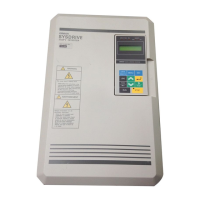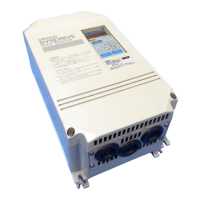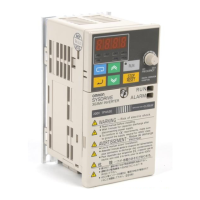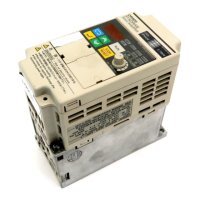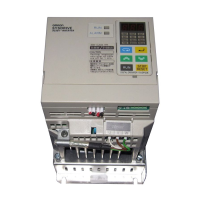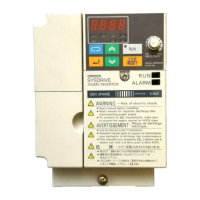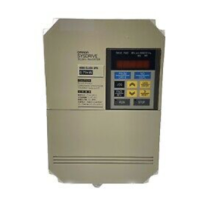1
K
KK
K Autotuning
Use
the
following
procedure
to
perform
autotuning
to
automatically
set
motor
constants
when
using
the
open-
loop
vector
control
method,
when
the
cable
length
is
long,
etc.
n
Setting
the
Autotuning
Mode
One
of
the
following
three
autotuning
modes
can
be
set.
• Rotational
autotuning
• Stationary
autotuning
• Stationary
autotuning
for
line-to-line
resistance
only
Rotational
Autotuning
(T1-01
=
0)
Rotational
autotuning
is
used
only
for
open-vector
control.
Set
T1-01
to
0,
input
the
data
from
the
nameplate,
and
then
press
the
RUN
Key
on
the
Digital
Operator.
The
Inverter
will
run
the
motor
at
zero
speed
for
approx-
imately
1minute,
and
run
the
motor
for
approximately
1
minute
to
set
the
required
motor
constants.
Stationary
Autotuning
(T1-01
=
1)
Stationary
autotuning
is
used
only
for
open-vector
control.
Set
T1-01
to
1,
input
the
data
from
the
nameplate,
and
then
press
the
RUN
Key
on
the
Digital
Operator.
The
Inverter
will
supply
power
to
the
stationary
motor
for
approximately
1
minute
and
some
of
the
motor
constants
will
be
set
automatically.
The
remaining
motor
constants
will
be
set
automatically
the
first
time
operation
is
started
in
drive
mode.
Stationary
Autotuning
for
Line-to-Line
Resistance
Only
(T1-01
=
2)
Stationary
autotuning
for
line-to-line
resistance
only
can
be
used
in
any
control
method.
This
is
the
only
auto-
tuning
possible
for
V/f
control
and
V/f
control
with
PG
modes.
Autotuning
can
be
used
to
prevent
control
errors
when
the
motor
cable
is
long
or
the
cable
length
has
changed
or
when
the
motor
and
Inverter
have
different
capacities.
To
perform
autotuning
in
V/f
control
or
V/f
control
with
PG,
set
T1-01
to
2,
and
then
press
the
RUN
Key
on
the
Digital
Operator.
The
Inverter
will
supply
power
to
the
stationary
motor
for
approximately
20
seconds
and
the
Motor
Line-to-Line
Resistance
(E2-05)
and
cable
resistance
will
be
automatically
measured.
This
can
be
performed
for
open-loop
vector
control.
IMPORTANT
1. Always disconnect the motor from the machine and confirm that it is safe to operate the motor before
performing rotational autotuning.
2. If the motor cannot be operated by itself, perform stationary autotuning, but always use rotational
autotuning whenever it is possible to operate the motor by itself to increase performance.
IMPORTANT
1. Power will be supplied to the motor when stationary autotuning is performed even though the motor
will not turn. Do not touch the motor until autotuning has been completed.
2. When performing stationary autotuning connected to a conveyor or other machine, ensure that the
holding brake is not activated during autotuning.
3. Keep the motor load ratio to 50% or less the first time the system is operated in drive mode after per-
forming stationary autotuning.
IMPORTANT
1. Power will be supplied to the motor when stationary autotuning for line-to-line resistance is performed
even though the motor will not turn. Do not touch the motor until autotuning has been completed.
2. When performing stationary autotuning connected to a conveyor or other machine, ensure that the
holding brake is not activated during autotuning.

